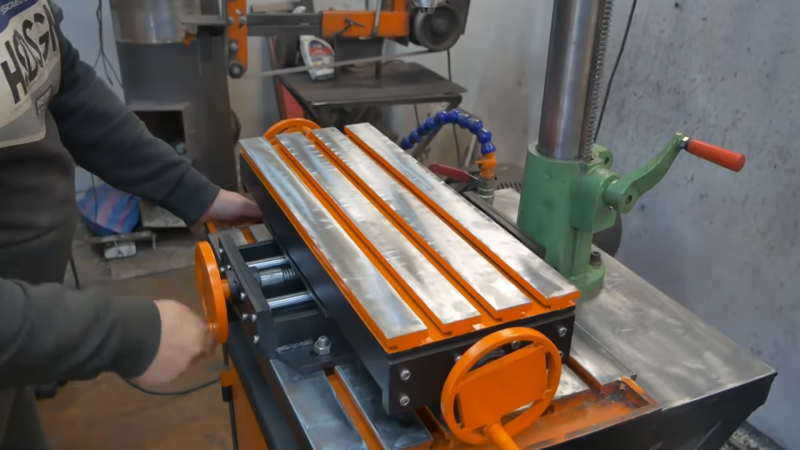Unless you have one large pile of cash to burn through, properly equipping a workshop can take years of burning through little piles of cash. Whether to save a bit of cash or simply for the challenge, [Workshop from Scratch] is doing exactly what his channel name suggests, and his latest project is a XY table. (Video, embedded below.)
A XY table, or cross table, allows a workpiece to be translated in two dimensions, usually on a drill press or milling machine. On a drill press they make repetitive task like drilling a series of holes simpler and quicker. [Workshop from Scratch] built most of the frame with steel flat bar, and the moving parts run on ground steel rods with linear bearings. Lead screws with hand wheels are used to translate the table.
A machine like this requires the opposing plates of each table to be perfectly aligned, which [Workshop from Scratch] achieved by spot welding the matching plates together and drilling them in one operation. He also added T-slot top surface, created by welding wide flat bar on top of narrower flat bar.
With the lack of dials, it doesn’t look like it’s meant for precision work, but we would still be interested to know how repeatable the lead screw positioning is. Regardless, it’s still a useful addition to the shop.
[Workshop from Scratch] is building a rather impressive collection of DIY tools, including a magnetic vise (that he already used with the XY table), magnetic drill press and a hydraulic lift table. We look forward to seeing what’s next on the list.
















Looks nice, but seems like a lot of work when you already have a mill in your shop.
That’s a ballscrew, it’ll be very repeatable, since CNCs use them all the time
It’s just an Acme or trapezoidal thread, not a ball screw. You can see him welding the nut. Ball screws are usually unsuitable for manual use because the friction is too low. Do not want the screw to rotate when you push on the table.
this person clearly doesnt fear distortions
Apparently he is more skilled and put more thought into it than first appears. Why no dials on cranks?
The video is well made, and from a distance his equipment looks well made and I’m planning to watch (at least parts of) some other of his videos.
Unfortunately he makes a bunch of mistakes which result in the end results having less quality then it could have been.
For example, @03:37 you see the bearing blocks and the plate moving while he punches the hole marks and then @03:57 he makes deep countersinks for the screws.
Screws for these bearing blocks should never have countersunk. The holes should be a bit larger and with flat surfaces, so fine adjustment can be done during assembly.
Without proper alignment there will be a lot of lateral stress in the bearings which will lead to premature failure.
A bit later, @06:07 he at least uses clamps so it does not move while punching the hole marks So watch it, and learn from his mistakes.
Very often it’s also not very economical to make stuff like this. Especially when you need to buy the raw steel for the parts. It’s hard to compete with Cast Iron cross tables made on some Chinese production line. They don’t have linear bearings, but these are not needed here anyway and they have much more stiffness.